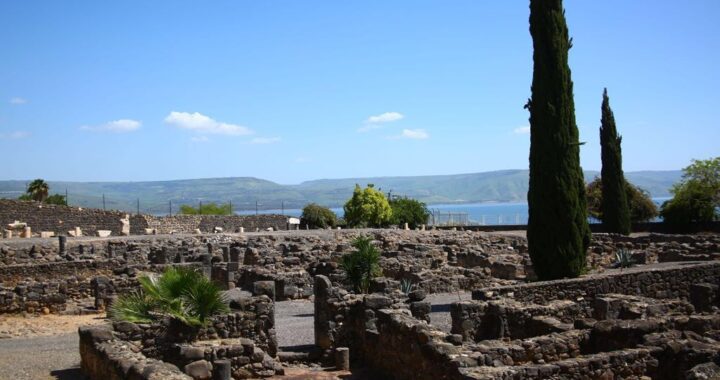The rapture of the church is not an incidental but a fundamental doctrine of the New Testament. It is the greatest hope that Christ gave to the church. The biblical writers speak of it as a blessed hope (Tit 2:13), a purifying hope (1 Thess 4:18), a comforting hope (1 Thess 4:18) and a sure hope (2 Pet. 1:19).
Since there is much confusion among Christians concerning the rapture, the following study should be helpful in clarifying the subject. This article will briefly examine five views regarding the rapture, including each position, its proponents, supposed proofs, and any problems associated with each view.
I. The Partial Rapture View
The first view that we will examine is the Partial Rapture View, which states that only those faithful believers who are “watching” and “waiting” for the Lord’s return will be taken in the rapture. The rapture is seen as a reward for being faithful to Christ. As believers are purged during the tribulation, they are raptured in groups, as described in Rev 7:9–14; 11:2; 12:5 and 16:15. Well-known Bible scholars such as G. H. Pember and J. A. Seiss advocated the partial rapture view. Illustrative of this position are the words of W. H. Hubbard, “Are you, reader, among the lukewarm whom the Lord will spew out of His mouth to pass through the tribulation, or the loyal who are faithfully performing the tasks and utilizing the privileges of grace, thus showing yourself ‘worthy to escape it’?” (Does the Church Go Through the Tribulation? St. Petersburg, FL, n.d., 18). Proponents of this view turn to passages emphasizing waiting and watching, as in Mt 24:40–51, 25:1–13; Lk 20:34–36, 21:36; 1 Cor 9:27; Phil 3:10–12; 1 Thess 5:6-10; 2 Tim 4:8; Tit 2:13; Heb 9:24–28 and Rev 3:3–10, 12:1–6.
Four problems with this view are as follows: 1.) The translation and resurrection are part of the believer’s salvation, not a reward for faithfulness. 2.) The Scriptures plainly teach that all believers will be included in the rapture. Paul declares in 1 Cor. 15:51 that “we shall all be changed,” including the carnal Corinthians whom he rebukes most sternly. 3.) Paul asserts that God has not appointed believers unto wrath (1 Thess. 5:9–10) but will remove us before the tribulation “that whether we are awake or asleep, we may live together with him.” The term asleep is not a reference to the dead believers. Rather, katheudo refers to one who is not being watchful or alert. 4.) This view divides the body of Christ. It is unthinkable that the unity of the body of Christ, so emphatically taught in the New Testament, could be severed.
II. The Midtribulational Rapture View
A second view is the Midtribulational Rapture View, which argues that the rapture will occur at the midpoint of the seven years of tribulation. Because only the last half of Daniel’s 70th Week is tribulation, proponents of this view believe they are really espousing a pretribulational rapture of the church. Like the pretribulationists, midtribulationists distinguish between the rapture and second coming and insist on a removal of the church to heaven prior to the time of the wrath of God. Among scholars espousing this position are G. H. Lang, Norman B. Harrison, J. Oliver Buswell, Jr. and Gleason Archer. Archer succinctly states his position as follows: “This interpretation makes a clear division between the first half as the period of the wrath of man, and the second half as the period of the wrath of God . . . the final generation of the pre-Rapture church will be subject to the wrath of man, but spared from the wrath of God” (The Rapture: Pre,- Mid,- or Post-Tribulational? Grand Rapids: Zondervan Publishing House, 1984, 139).
Adherents to the Midtribulational view rely on two so-called proofs. First, both Daniel and the book of Revelation portray the last half of the 70th Week of Daniel as being a time of tribulation and terror, with the Antichrist ruling over the world from Jerusalem and the severest judgments poured out upon the earth (cf. Dan 7:25; 9:27; 12:7, 11; Rev 11:2; 12:6, 14; 13:5). Second, some significant event at the midpoint of the 70th Week has drastic consequences for this planet. It is surmised that this event is the rapture, that the blowing of the seventh trumpet in Rev 10:7 and 11:15 relates to the “last trump” of 1 Corinthians 15:52, and that the removal of the two witnesses in Revelation 11 is a symbolic description of the rapture. The earlier judgments in the book of Revelation, including the seal judgments and six trumpet judgments, are not seen as God’s wrath but as the wrath of man. This view teaches that the believer must endure the wrath of man but is exempt from the wrath of God.
The problems with the Midtribulational Rapture View, as with the Partial Rapture View, are fourfold: 1.) It is impossible to espouse a midtribulational view of the rapture and hold to the concept of imminency. According to this view, the appearance of the Antichrist, his covenant with Israel, and the destruction caused by the four horsemen must occur before Christ can return. Therefore, the rapture cannot happen today. 2.) The last trumpet of 1 Cor 15 and the seventh trumpet are not identical. The last trumpet of 1 Cor 15 (the same as that of 1 Thess 4:16) signals the completion of the believer’s salvation as he meets his Lord. The seventh trumpet is the last one in a series announcing divine judgment on the earth. There is even a later trumpet sounded during the tribulation to gather the elect of the Second Advent (Mt 24:31). Similarity does not prove identity. 3.) Even the first part of the tribulation reveals God’s wrath, not simply human or satanic wrath. The earthlings of Rev 6:16–17 recognize that the seal judgments are the “wrath of the Lamb.” In Revelation 5 it is Christ Who breaks the seals and releases judgment on the earth. 4.) The two witnesses of Revelation 11 could not possibly be the church. The witnesses are literally killed and lie in the literal streets of literal Jerusalem for three days. Besides, some Bible scholars prefer to see the prophets’ ministry begin at the mid-point of the tribulation and conclude prior to the Second Advent. The seventh trumpet ushers in not the second half of the tribulation but the messianic kingdom.
III. The Pre-Wrath Rapture View
A third perspective on the rapture is the Pre-Wrath Rapture View. This relatively recent view is espoused by Marv Rosenthal in his book The Pre-Wrath Rapture of the Church (1990) and his periodical Zion’s Fire. It is a variation of the mid-tribulational position and has similarities to the post-tribulational position.
The basic thesis of this view is that the church will be removed from the earth by the rapture just before the fourth quarter of the 70th Week of Daniel. This view proposes first that the tribulation involves three distinct periods: the beginning of sorrows, lasting 3 1/2 years; the Great Tribulation, lasting 21 months; and the Day of the Lord, spanning the final 21 months. The church, therefore, would need to go through three-fourths of the tribulation. Second, this view teaches that believers will endure the time of man’s wrath and Satan’s wrath but will be delivered before the Day of the Lord, the time of God’s wrath, which begins with the opening of the seventh seal (Rev 8:1). And, third, this view holds that the church must endure the Antichrist (who is the resurrected Hitler) and the Great Tribulation, but after 64 months into the 70th Week will be raptured.
Five major problems with this view are as follows: 1.) This view totally destroys the doctrine of imminency, which Rosenthal calls “untenable.” However, passages like 1 Thess 5:6, 1 Cor 1:7, Tit 2:13 and 1 John 3:2,3 speak of the blessed hope as an imminent event. 2.) Rosenthal has no clear explanation of where the church will be for 21 months after the rapture. He totally ignores the promise of Christ in John 14:1–4 that the church will be taken to heaven after Christ’s return. 3.) The Day of the Lord is clearly longer than 21 months, covering the judgments of the tribulation and blessings of the Millennium (Zeph 3:8-13; Hag 2:6-23; Zech 14:1–10), including a total of 1007 years. 4.) The judgments in the first half of the tribulation are clearly divine judgments. It is Christ Who opens the seals and uses various means to judge a Christ-rejecting world. 5.) Contrary to Rosenthal’s claim that the word tribulation is never used for the first half of Daniel’s 70th Week, Christ clearly refers to the first half of the seven-year period when He says in Matthew 24:9 that “they will deliver you to tribulation.”

Dr. Manfred Kober
Dr. Manfred Kober (Th.M. and Th.D., Dallas Theological Seminary) is a German-born theologian and educator who has significantly contributed to Christian scholarship and ministry. After enduring the hardships of post-war Germany, he emigrated to the United States in 1953. Dr. Kober pursued theological studies at Baptist Bible Seminary in Johnson City, New York, the University of Erlangen in Germany, and Dallas Theological Seminary.
He served as a professor and chaired the Department of Theology at Faith Baptist Bible College in Ankeny, Iowa, from 1969 to 1999. Today, he resides in Bondurant, IA, with his wife, Sharon, and they have two children and three grandchildren.


